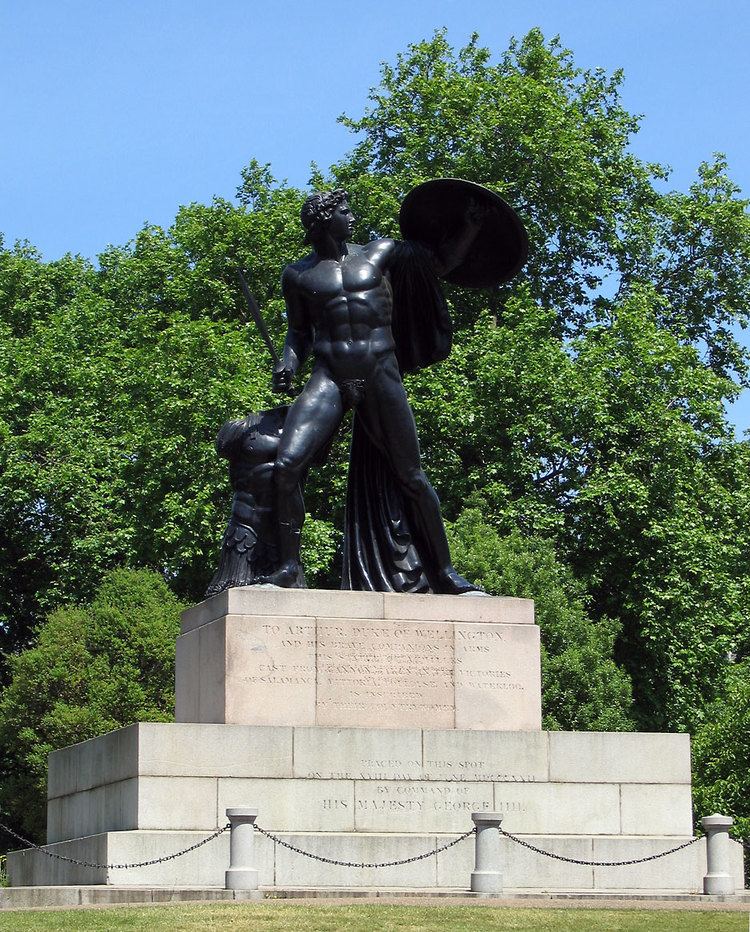Address London W1J 7JZ, UK | ||
 | ||
Similar Equestrian statue of the Duke, John F Kennedy Memorial, The Barbican Muse, Big 4, Agatha Christie Memorial | ||
The Wellington Monument typically refers to the monument to Arthur Wellesley, the first duke of Wellington, and his victories in the Peninsular War and the latter stages of the Napoleonic Wars, sited at the south-western end of Park Lane in London. It was inaugurated on 18 June 1822. Its total height, including the sculpture, base and the mound on which it stands, is 36 ft.
It is best known for its colossal 18 ft high statue of Achilles by the sculptor Richard Westmacott, produced from melted-down captured enemy cannon. Based on the poses of the Borghese Gladiator and more particularly the Quirinal Horse Tamers, it shows the Greek mythological hero as a muscular, nude young man, raising his shield with his left hand and his short sword in his right hand, with his armour standing by his right thigh and his cloak draped over his left shoulder. The monument was funded by donations from British women totalling £10,000. On being transported to its final site, the entrance gates into Hyde Park were too low for it to fit, so it proved necessary to knock a hole in the adjoining wall. The inscription on the statue's Dartmoor granite base reads:
To Arthur Duke of Wellingtonand his brave companions in armsthis statue of Achillescast from cannon taken in the victoriesof Salamanca, Vittoria, Toulouse, and Waterloois inscribedby their country womenPlaced on this spoton the XVIII day of June MDCCCXXIIby command ofHis Majesty George IIII.This was London's first public nude sculpture since antiquity and, though the artist had already included a fig leaf over the figure's genitalia, much controversy still resulted, pitching the sculptor's supporters such as Benjamin Robert Haydon against fierce critics such as George Cruikshank in his Backside & front view of the ladies fancy-man, Paddy Carey. The controversy may also have been linked to Canova's nude colossus of Napoleon that had arrived just before this at Apsley House, and also treated on whether Achilles was a metaphor for military heroism in general, Wellington in particular or both.
